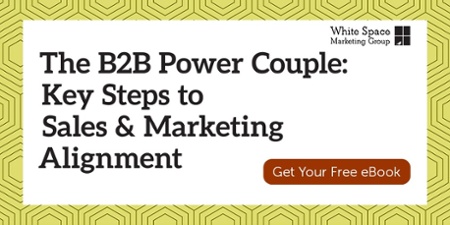 If you’ve tightened up your middle of the funnel (MOFU) content based on last week’s recommendations, you’re well on your way to completing your journey down the conversion funnel. You’ve laid all the groundwork with top of the funnel “awareness and education” content (TOFU) and moved prospects further down the funnel with MOFU’s continued education and solution-focused materials.
If you’ve tightened up your middle of the funnel (MOFU) content based on last week’s recommendations, you’re well on your way to completing your journey down the conversion funnel. You’ve laid all the groundwork with top of the funnel “awareness and education” content (TOFU) and moved prospects further down the funnel with MOFU’s continued education and solution-focused materials.
Now, it’s finally time to seal the deal.
The bottom of the funnel (BOFU) is where prospects get really serious about purchasing decisions. While prospects may be interacting with salespeople at this point, marketers still play a key role. If your company has organized itself so that sales and marketing work in synchrony, both departments will hold the same goals and collectively guide prospects to conversion.
What happens if sales and marketing aren’t on the same page?
Danger of Playing the Blame Game
It’s been my experience that when a lead goes cold or a prospect abandons ship, sales and marketing tend to point fingers—at each other. Up to 76 percent of sales leaders believe contributions from marketing have no meaningful impact on achieving sales goals, but approximately 60-70 percent of marketing content is not used by sales teams at all.
In the mind of the buyer, any purchase constitutes a significant decision
This misalignment results in wasted time, money, and resources. To be fair, I’ve worked with companies where sales teams weren’t always aware of existing assets or how to best use them. Instead of engaging with prospects, reps often squander precious hours to create their own materials--which also puts brand consistency at risk. Sales is closest to prospects at this stage, but if they aren’t spending time gathering buyer insight, or they don’t feel the need to convey it to marketing, the disconnect will continue.
On the other hand, Aberdeen research shows that 74 percent of Best-in-Class companies have complete or strong alignment between sales and marketing, compared to just 45 percent of all others. It’s especially imperative for teams to become staunch allies at the BOFU juncture--and incorporate BOFU-specific content--in order to accomplish the goal you’ve all been working towards: closing the sale.
Decision Time: BOFU Content to Ease Last-Minute Concerns
No matter the dollar amount, in the mind of the buyer, any purchase constitutes a significant decision. If prospects are waffling between “yay” or “nay,” some can be swayed with a discount or promotional offer, such as a free trial or reduced introductory rate. These individuals have come to appreciate the value of your product or service but aren’t quite ready to pay full price.
Others may be just fine with the price tag but need a tad more hand-holding to work through final concerns. At this stage, unexpected doubts may arise and trust may waver, so it’s essential you provide content that speaks to last-minute anxieties.
Customer testimonials are another opportunity to instill confidence
For example, case studies were a key part of MOFU, but they can also be influential at this stage by demonstrating your company’s expertise. Customer testimonials are another opportunity to instill confidence. If you’ve received any awards, press praise, or industry accolades, be sure to make them readily available for consumption. A personalized demonstration video reinforces your dedication to meeting clients’ specific needs.
All of these content pieces showcase your company’s ability to provide solutions, and an added bonus is that you can illustrate why you do it better than the competition.
One final content offering you may consider sharing is your company’s philosophy on how business is “done” once prospects convert. Use mediums like video, infographics, or even an extension of an About Us or FAQ section to provide a snapshot of what happens once they convert—for instance, how specific issues will be addressed, how they will be treated as a client, and how they’ll be able to communicate with you going forward. Knowing what to expect after signing on the dotted line yields a sense of comfort for prospects who need that final push.
Completing the Conversion Narrative
Think of your entire content strategy as an ongoing narrative; one that tells the story of your product/ service in a way that your audience appreciates and can connect with. And, if you’ve created an environment where sales and marketing work in harmony--one company, one goal—movement through the sales funnel will be much smoother and undoubtedly more successful.








